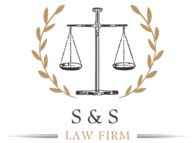Skip to content
INTELLECTUAL PROPERTY LAW – BRIEF
UNIT-I: Introduction to Intellectual Property Law
- Concept of Property vis-à-vis Intellectual Property:
Distinguishes tangible property (land, goods) from intangible property (creations of mind like inventions, literary works, symbols).
- Basic Concepts and Nature:
Intellectual Property (IP) provides legal rights to creators/inventors for their creations for a limited period to incentivize innovation.
- Origin and Development:
Historical evolution from guild systems and royal monopolies to modern statutes governing Copyrights, Trademarks, and Patents.
- Commercial Exploitation:
IP rights can be licensed, assigned, or sold, becoming valuable commercial assets.
- Enforcement and Remedies:
Includes civil remedies (injunction, damages), criminal actions, and administrative measures.
- International Character and Economic Development:
IP plays a critical role in fostering innovation, technology transfer, and trade.
- International Conventions Overview:
- Berne Convention (1886) – Copyright protection.
- WIPO Treaties (1996) – Digital rights.
- Paris Convention (1883) – Protection of industrial property.
- TRIPS Agreement (1995) – Binding WTO members to minimum IP standards.
- India’s Position:
India is a signatory to all major IP treaties and has amended its laws (e.g., Copyright, Patent, Trademark) to comply with international obligations.
UNIT-II: The Copyright Act, 1970
- Meaning:
Legal protection granted to authors for original literary, artistic, musical, and dramatic works.
- Copyright Office and Board:
Statutory authorities responsible for administration and dispute resolution.
- Subject Matter:
Includes books, music, films, software, etc.
- Ownership, Assignment & Infringement:
Rights can be transferred; unauthorized use amounts to infringement.
- Remedies:
Injunctions, damages, delivery-up of infringing copies.
- Term and Abridgement:
Generally, lifetime of author + 60 years; abridged works may also be protected if original.
- Rights of Broadcasting Authorities:
Special rights over content transmitted via radio, TV, etc.
- Leading Cases:
- R.G. Anand vs. M/s Deluxe Films (1978) – Idea vs. expression doctrine.
- Najma Heptulla vs. Orient Longman Ltd. (1989) – Ownership and joint authorship issues.
UNIT-III: The Patents Act, 1970 (as amended in 2002)
- Object:
Encourages inventions and their disclosure in exchange for exclusive rights.
- Value:
Incentivizes innovation and facilitates technology advancement.
- Patentable/Non-Patentable Inventions:
Must be new, involve inventive step, and be industrially applicable; discoveries, abstract theories, and methods of agriculture are excluded.
- Process vs. Product Patent:
Initially, India allowed only process patents (especially in pharma); amended post-TRIPS to include product patents.
- Procedure:
Application → Examination → Publication → Grant.
- Rights/Obligations of Patentee:
Exclusive rights to manufacture, use, sell the invention; obligation to disclose best method.
- Revocation & Surrender:
Patents can be revoked for non-compliance or surrendered voluntarily.
- Infringement:
Use without permission is actionable.
- Leading Cases:
- Biochem Pharma vs. Biochem Synergy Ltd. (1997) – Pharmaceutical patent dispute.
- Bishwanath Parshad vs. Hindustan Metal Industries (1982) – Validity and originality of invention.
UNIT-IV: The Trade Marks Act, 1999
- What is a Trade Mark:
A symbol, word, or phrase legally registered to represent a brand/product.
- Functions:
Identifies source, guarantees quality, advertises products.
- Trade Mark Registry & Register:
Maintains official records of registered trademarks.
- Registration Process:
Filing → Examination → Advertisement → Registration.
- Effects of Registration:
Legal exclusivity, right to sue for infringement, brand protection.
- Assignment & Transmission:
Trademarks can be transferred with or without goodwill.
- Rectification and Correction:
Errors can be corrected; wrongful entries can be removed.
- Passing Off and Infringement:
- Passing Off: Protects unregistered marks from misrepresentation.
- Infringement: Violation of rights over a registered trademark.
- Leading Case Laws:
1. Bata India Ltd. vs. M/s Pyare Lal & Co. (AIR 1985 Allahabad 242)
Facts:
Bata India Ltd. (the Plaintiff) filed a suit against M/s Pyare Lal & Co. (the Defendant), alleging that the latter was infringing on its trademark, which is related to the brand “BATA.” The Plaintiff claimed that the Defendant was selling footwear under a name that was confusingly similar to the trademark “BATA,” thus misleading consumers.
Issues:
The core issue was whether the Defendant’s use of a similar name constituted an infringement of the Plaintiff’s registered trademark, and if so, whether the Plaintiff was entitled to an injunction to prevent further infringement.
Court’s Decision:
The Allahabad High Court ruled in favor of Bata India Ltd. The Court held that the Defendant’s use of a name similar to “BATA” would create confusion among consumers, thereby constituting infringement under the Trade Marks Act, 1999. The Court granted an injunction against the Defendant, restraining them from using the confusingly similar mark.
Significance:
This case emphasizes the importance of protecting trademarks that are widely known and used in the marketplace. It also underscores the protection against any action that may mislead consumers regarding the origin of goods or services.
2. Sumat Prasad Jain vs. Sheojana Prasad (AIR 1972 SC 2488)
Facts:
In this case, Sumat Prasad Jain (the Plaintiff) and Sheojana Prasad (the Defendant) were involved in a dispute regarding the ownership of the trademark and the rights to use a particular business name. The Plaintiff alleged that the Defendant was using a similar name for his business, which would cause confusion and could harm the reputation of the Plaintiff’s brand.
Issues:
The main issue revolved around the ownership of the trademark and whether the Defendant had any right to use a similar name in his business. The case also raised questions regarding the legitimacy of the use of a registered trademark.
Court’s Decision:
The Supreme Court of India ruled in favor of the Plaintiff. The Court held that the Defendant’s use of a similar name or trademark was unjust and unlawful, as it could cause confusion among the public and damage the Plaintiff’s business. The judgment reinforced the importance of protecting registered trademarks and the right to exclusive use of a name that identifies the source of goods or services.
Significance:
This case highlights the importance of trademark registration and the rights of the trademark holder to prevent infringement, ensuring that the mark is exclusively associated with the holder’s goods or services.
